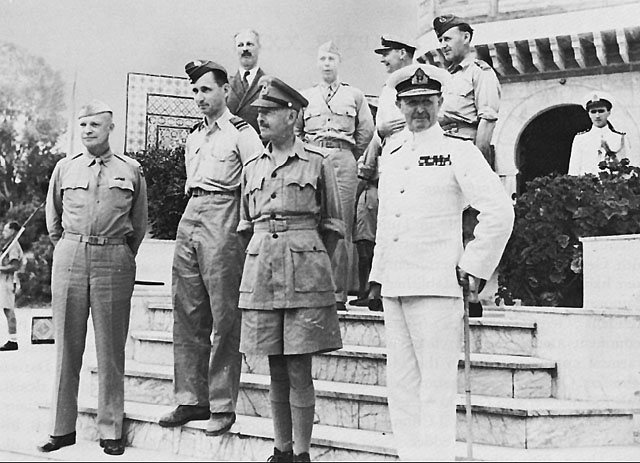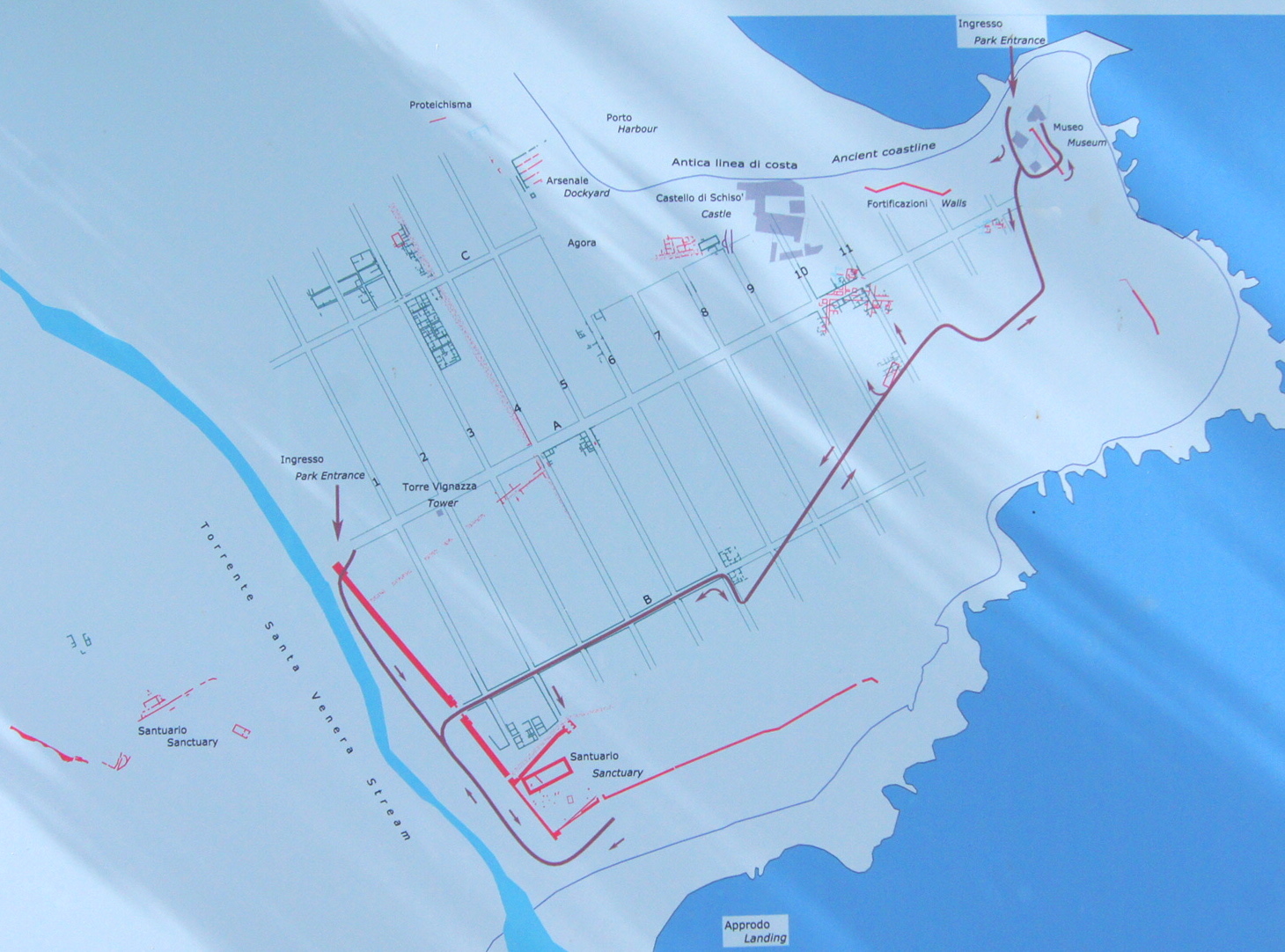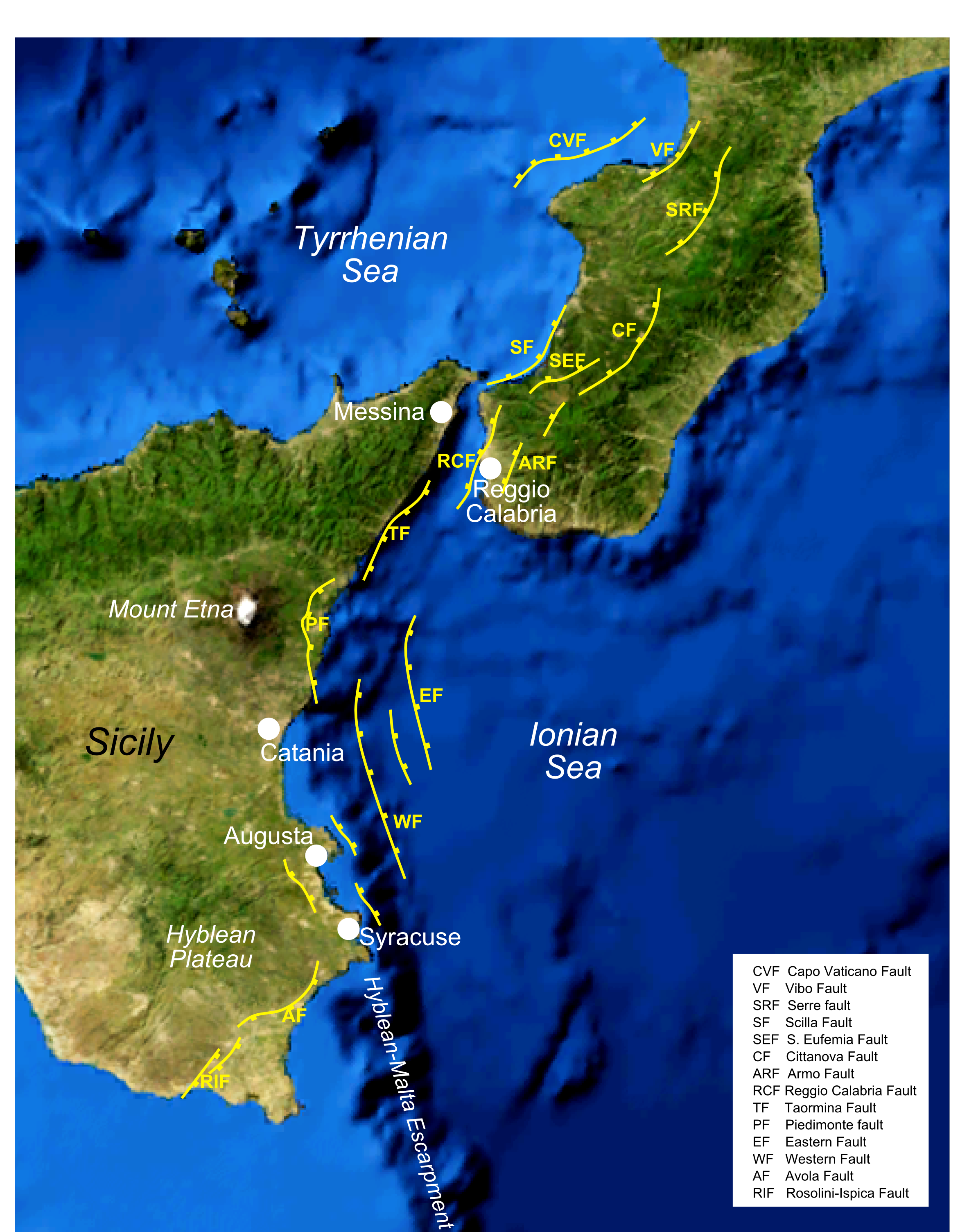|
Lentini
Lentini (; ; ; ) is a town and in the Province of Syracuse, southeastern Sicily (Southern Italy), located 35 km (22 miles) north-west of Syracuse. History The city was founded by colonists from Naxos as Leontini in 729 BC, which in its beginnings was a Chalcidian colony established five years earlier in Magna Graecia. It is virtually the only Greek settlement in Sicily that is not located on the coast, founded around 10 km inland. The site, originally held by the Sicels, was seized by the Greeks owing to their command on the fertile plain in the north. The city was reduced to subject status in 494 BC by Hippocrates of Gela, who made his ally Aenesidemus its tyrant. In 476 BC, Hieron of Syracuse moved the inhabitants from Catana and Naxos to Leontini. Later on, the city of Leontini regained its independence. However, as a part of the inhabitants' efforts to retain their independence, they invoked more than once the interventions of Athens. It was mainly the eloquence of ... [...More Info...] [...Related Items...] OR: [Wikipedia] [Google] [Baidu] |
Santa Maria La Cava E Sant'Alfio
The Chiesa madre of Santa Maria la Cava e Sant'Alfio ('Mother Church of St. Mary of the Pit and St. Alphius') is the main Roman Catholic church in Lentini, province of Syracuse, Sicily Italy. History and description The present church was built after the 1693 Sicily earthquake by merging the former cathedral of Santa Maria la Cava with the Chapter (religion), chapter of the collegiate church dedicated to the Saints Alphius, Philadelphus and Cyrinus. Construction began in 1700 and continued until 1750. Built in baroque architecture, baroque-style, the interior has three naves. In the left nave, the reliquary float of St. Alphius, made of silver, is stored. The float is carried in a procession through the main streets of Lentini during the celebrations for Saints Alphius (9–11 May), the patron saint of the town. The right nave hosts the sepulchres of the martyrs Alphius, Philadelphus and Cyrinus. Notably, the church hosts a Byzantine icon of the Virgin Hodegetria dated from th ... [...More Info...] [...Related Items...] OR: [Wikipedia] [Google] [Baidu] |
Sicily
Sicily (Italian language, Italian and ), officially the Sicilian Region (), is an island in the central Mediterranean Sea, south of the Italian Peninsula in continental Europe and is one of the 20 regions of Italy, regions of Italy. With 4.7 million inhabitants, including 1.2 million in and around the capital city of Palermo, it is both the largest and most populous island in the Mediterranean Sea. Sicily is named after the Sicels, who inhabited the eastern part of the island during the Iron Age. Sicily has a rich and unique culture in #Art and architecture, arts, Music of Sicily, music, #Literature, literature, Sicilian cuisine, cuisine, and Sicilian Baroque, architecture. Its most prominent landmark is Mount Etna, the tallest active volcano in Europe, and one of the most active in the world, currently high. The island has a typical Mediterranean climate. It is separated from Calabria by the Strait of Messina. It is one of the five Regions of Italy#Autonomous regions with s ... [...More Info...] [...Related Items...] OR: [Wikipedia] [Google] [Baidu] |
Santissima Trinità E San Marziano, Lentini
The Chiesa of Santissima Trinità e San Marziano (Church of the Holiest Trinity and St Marziano) is a Roman Catholic church located on via San Francesco d'Assisi, 3, just south of the town centre of Lentini, province of Syracuse, Sicily, Italy. History and description The present church was built after the 1693 Sicily earthquake inserted into the ruins of the 16th-century palace of ''La Palumba'', which then became a Clarissan order monastery. The design is attributed to Vincenzo Vella. The facade interrupts the palace front and is topped by a sail-like bell tower. The portal is accessed through a brief double staircase. The second story has a row of windows with metal grills used by the cloistered nuns to look out on the piazza in front of the church. The interior has a ceiling fresco depicting the ''Glory of the Trinity with St Marziano, Clare, Benedict, and Francis'' by Sebastiano Lo Monaco; one of the altarpieces was painted by Giuseppe Velasco. The main altar utilizes poly ... [...More Info...] [...Related Items...] OR: [Wikipedia] [Google] [Baidu] |
Province Of Syracuse
The province of Syracuse (; ) was a Provinces of Italy, province in the autonomous island region of Sicily, Italy. Its capital was the city of Syracuse, Sicily, Syracuse, a town established by Greeks, Greek colonists arriving from Corinth in the 8th century BC. It had an area of and a total population of 403,985 (2016). Syracuse had 8% of the Sicilian population and 8.2% of Sicily's area. Following the suppression of the Sicilian provinces, it was replaced in August 2015 by the free municipal consortium of Syracuse (). Geography and heritage The province of Syracuse lies in the southeastern Sicily, in southwestern Italy. It is bordered to the north and north-west by the province of Catania to the west by the province of Ragusa, and to the east and south by the Ionian and Mediterranean seas. It occupies an area of . In 2002, ancient centres of Noto, Palazzolo Acreide and six other towns in the Noto Valley, were awarded UNESCO World Heritage Site status, and is a significant attr ... [...More Info...] [...Related Items...] OR: [Wikipedia] [Google] [Baidu] |
Allied Invasion Of Sicily
The Allied invasion of Sicily, also known as the Battle of Sicily and Operation Husky, was a major campaign of World War II in which the Allies of World War II, Allied forces invaded the island of Sicily in July 1943 and took it from the Axis powers, Axis forces (Kingdom of Italy and Nazi Germany). It began with a large Amphibious warfare, amphibious and airborne forces, airborne Military operation, operation, followed by a six-week land campaign, and initiated the Italian campaign (World War II), Italian campaign. To divert some of the Axis forces to other areas, the Allies engaged in several deception operations, the most famous and successful of which was Operation Mincemeat. Husky began on the night of 9–10 July 1943 and ended on 17 August. Strategically, Husky achieved the goals set out for it by Allied planners: the Allies drove Axis air, land and naval forces from the island, and the Mediterranean Sea, Mediterranean sea lanes were opened for Allied merchant ships for th ... [...More Info...] [...Related Items...] OR: [Wikipedia] [Google] [Baidu] |
Alphius, Philadelphus And Cyrinus
Saints Alphius, Philadelphus and Cyrinus (), martyrs in the Byzantine traditions of southern Italy, were three brothers from Vaste, in the diocese of Otranto, who died with their mother, Benedicta, during the persecution of Decius, ca 251 AD. The details concerning these martyrdoms are traditional, drawn up at a later date in the Benedictine ''Acta'' of Saint Alphius. According to the ''Acta'', Alphius, Philadelphus, Cyrinus, ranging in age from nineteen to twenty-two, and their mother Benedicta were arrested with other Christians during the persecutions under Decius. They were taken to Pozzuoli, near Naples, where one of the Christians, Onesimus, was executed. The brothers were taken on to Sicily, where they were martyred at Lentini; there they are among the patron saints. Alphius had his tongue torn from his mouth. Philadelphus was burned on a stake and Cyrinus was boiled alive in oil. No details of her execution are given for Benedicta. Their feast day is 10 May in Trecastag ... [...More Info...] [...Related Items...] OR: [Wikipedia] [Google] [Baidu] |
Naxos (Sicily)
Naxos or Naxus () was an ancient Greek city of Magna Graecia, presently situated in modern Giardini Naxos near Taormina on the east coast of Sicily. Much of the site has never been built on and parts have been excavated in recent years. Its remains are open to the public and an on-site museum contains many finds. Location The city occupied a low rocky headland, now called Cape Schisò, formed by an ancient lava flow, immediately to the north of the Acesines (modern Alcantara) stream. Name There can be little doubt that the name was derivedHellanicus FGrH 4 F82 from the origin of the first colonists from Naxos in Greece. This has become even more definite since 1977 when the marble ''cippus'' (or sacred stone) inscribed with a dedication to the goddess Enyo was found in the large sanctuary west of the Santa Venera river. The characters are written in the unique 7th c. BC script of Greek Naxos. History Foundation Ancient writers agree that Naxos was the most ancient ... [...More Info...] [...Related Items...] OR: [Wikipedia] [Google] [Baidu] |
Magna Graecia
Magna Graecia refers to the Greek-speaking areas of southern Italy, encompassing the modern Regions of Italy, Italian regions of Calabria, Apulia, Basilicata, Campania, and Sicily. These regions were Greek colonisation, extensively settled by Greeks beginning in the 8th century BC. Initially founded by their ''metropoleis'' (mother cities), the settlements evolved into independent and powerful Greek city-states (''poleis''). The settlers brought with them Ancient Greece, Hellenic civilization, which over time developed distinct local forms due to both their distance from Greece and the influence of the indigenous peoples of southern Italy. This interaction left a lasting imprint on Italy, including on Ancient Rome, Roman culture. The Greek settlers also influenced native groups such as the Sicels and the Oenotrians, many of whom adopted Greek culture and became Hellenization, Hellenized. In areas like architecture and urban planning, the colonies sometimes surpassed the achievem ... [...More Info...] [...Related Items...] OR: [Wikipedia] [Google] [Baidu] |
1693 Sicily Earthquake
The 1693 Sicily earthquake was a natural disaster that struck parts of southern Italy near Sicily, then a territory part of the Crown of Aragon by the Kings of Spain Calabria and Malta, on 11 January at around 21:00 local time. This earthquake was preceded by a damaging foreshock on 9 January. The main quake had an estimated magnitude of 7.4 on the moment magnitude scale, the most powerful in recorded Italian history, and a maximum intensity of XI (''Extreme'') on the Mercalli intensity scale, destroying at least 70 towns and cities, seriously affecting an area of and causing the death of about 60,000 people. The earthquake was followed by a number of tsunamis that devastated the coastal villages on the Ionian Sea and in the Straits of Messina. Almost two-thirds of the entire population of Catania were killed. The Epicenter, epicentre of the disaster was probably close to the coast, possibly offshore, although the exact position remains unknown. The extent and level of destruction ... [...More Info...] [...Related Items...] OR: [Wikipedia] [Google] [Baidu] |
Catania
Catania (, , , Sicilian and ) is the second-largest municipality on Sicily, after Palermo, both by area and by population. Despite being the second city of the island, Catania is the center of the most densely populated Sicilian conurbation, which is among the largest in Italy. It has important road and rail transport infrastructures, and hosts Catania Airport, the main airport of Sicily (fifth-largest in Italy). The city is located on Sicily's east coast, facing the Ionian Sea at the base of the active volcano Mount Etna. It is the capital of the 58-municipality province known as the Metropolitan City of Catania, which is the seventh-largest metropolitan area in Italy. The population of the city proper is 297,517, while the population of the metropolitan city is 1,068,563. Catania was founded in the 8th century BC by Chalcidian Greeks in Magna Graecia. The city has weathered multiple geologic catastrophes: it was almost completely destroyed by a catastrophic earthquake in 1169 ... [...More Info...] [...Related Items...] OR: [Wikipedia] [Google] [Baidu] |
Hippocrates Of Gela
Hippocrates (; died 491 BC) was the second tyrant of Gela, Magna Graecia, and ruled from 498 BC to 491 BC. He was the brother of Cleander and succeeded him to the throne after his death in 498. With him, Gela began its expansion phase; Hippocrates aimed to conquer all of southeastern Sicily in order to build a great state with Gela as its capital. He formed an alliance with Agrigento and conquered Zancle, Camarina, Catana, Naxos and Leontini. He also managed to besiege Syracuse, but had to withdraw, due to Corinthian and Corcyran involvement in the war. During his government, his city became the most powerful and flourishing among the Greek colonies in Sicily. Hippocrates died in battle against the Sicels. He designated his sons, Euclides and Cleander, as his successors, but they were soon replaced by the commander of the cavalry, Gelo who became the new tyrant of Gela.Herodotus, ''The Histories''7.155/ref> References * , width=25% align=center, Preceded by: Cleande ... [...More Info...] [...Related Items...] OR: [Wikipedia] [Google] [Baidu] |
Aenesidemus, Tyrant Of Leontini
Aenesidemus (Aenesidemos or Enesidemus), the son of Pataecus of Gela in Sicily, Magna Graecia, was made tyrant of Leontini in 498 BC by Hippocrates of Gela after aiding the latter in his effort to conquer southeastern Sicily. Aenesidemus likely continued to hold Leontini at least until the death of Hippocrates in 491 BC. The inclusion of Aenesidemus as a character in the ancient Greek novel A novel is an extended work of narrative fiction usually written in prose and published as a book. The word derives from the for 'new', 'news', or 'short story (of something new)', itself from the , a singular noun use of the neuter plural of ... ''The Wonders Beyond Thule'' by Antonius Diogenes provides the general fictive or dramatic date for these events. Notes Sicilian tyrants Ancient Syracusans 5th-century BC Greek people {{Sicily-stub ... [...More Info...] [...Related Items...] OR: [Wikipedia] [Google] [Baidu] |




